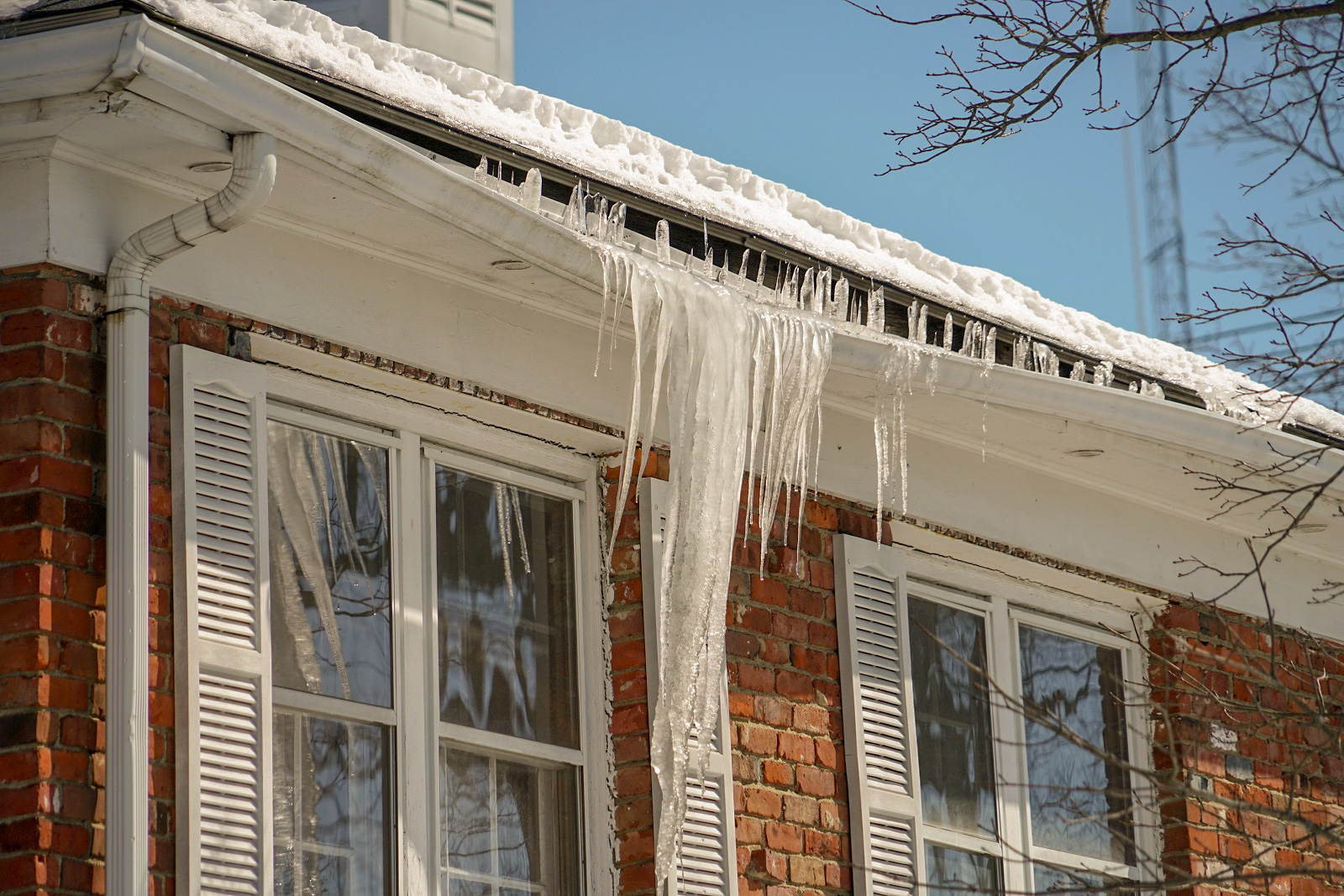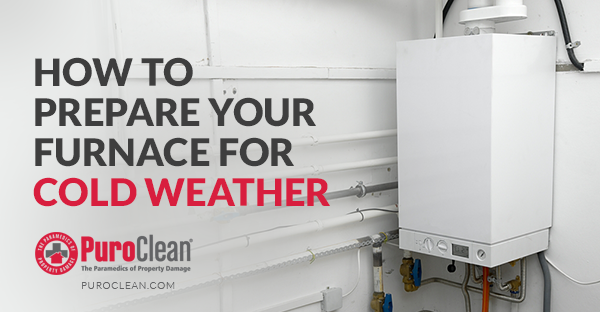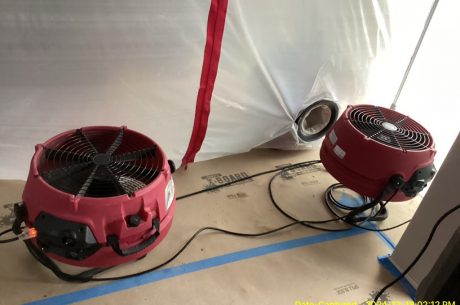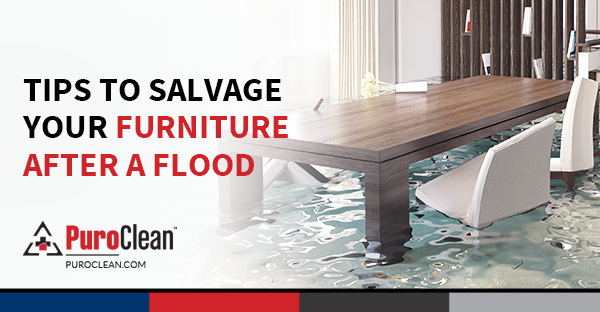The first snowfall of the season can be magical until you hear the unmistakable sound of water dripping from your ceiling or discover a burst pipe in your basement.
Last winter, homeowners across North America filed over $13 billion in insurance claims for property damage during winter months, with frozen pipes alone causing an average of $5,000 to $10,000 in repairs per incident.
Here’s the truth: winter doesn’t just bring cold weather and holiday cheer. It brings unique threats to your property that can turn into expensive nightmares if you’re not prepared. Ice dams, frozen pipes, roof collapses, foundation cracks, and heating system failures are all waiting to strike when temperatures plummet.
But here’s the good news most property damage during winter is completely preventable. With the right preparation and knowledge, you can protect your home and avoid becoming another winter casualty statistic.
In this comprehensive guide, PuroClean’s restoration experts share battle-tested strategies to safeguard your property through the harshest winter conditions.
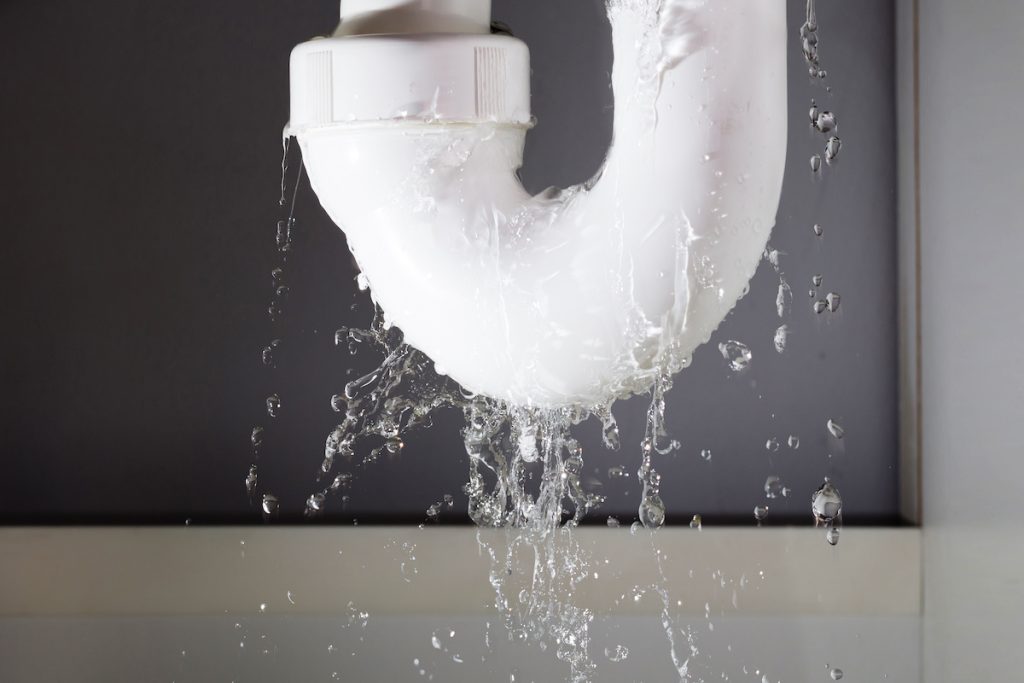
Understanding the Real Threats: What Causes Property Damage During Winter?
Before you can protect your home, you need to understand what you’re protecting it from. Winter property damage doesn’t happen randomly it follows predictable patterns driven by freezing temperatures, moisture, and structural stress.
The Science Behind Winter Property Damage
When temperatures drop below freezing, water expands by approximately 9% as it turns to ice. This seemingly small expansion generates enormous pressure up to 2,000 pounds per square inch. That’s enough force to split copper pipes, crack concrete foundations, and push walls apart.
Meanwhile, the freeze-thaw cycle wreaks havoc on roofing materials, siding, and masonry. Water seeps into tiny cracks during the day, freezes overnight, expands, and makes those cracks larger. Repeat this cycle throughout winter, and minor issues become major structural problems.
The Most Common Types of Property Damage During Winter
Frozen and Burst Pipes: Pipes in unheated areas like attics, crawl spaces, and exterior walls are particularly vulnerable. When water freezes inside pipes, the expanding ice creates pressure that eventually causes the pipe to burst, unleashing hundreds of gallons of water into your home.
Ice Dams: These form when heat escapes through your roof, melting snow that then refreezes at the roof’s edge. The resulting ice barrier traps melting snow, forcing water underneath shingles and into your home’s interior.
Roof Damage and Collapse: Heavy snow accumulation can exceed your roof’s weight capacity. Wet, compacted snow weighs approximately 20 pounds per cubic foot a typical roof can hold 1,800 to 3,000 square feet, meaning significant snow loads can reach tens of thousands of pounds.
Foundation Cracks: Frozen ground expands and contracts, creating pressure against foundation walls. Combined with poor drainage, this can cause cracks that allow water infiltration and structural instability.
Heating System Failures: When your furnace quits during a cold snap, pipes freeze within hours, and your home becomes uninhabitable quickly.

Preventing Frozen Pipes: Your First Line of Defense
Sarah from Norristown PA learned about property damage during winter the hard way. She left for a weekend ski trip, leaving her thermostat at 50°F to save energy. She returned to find her kitchen ceiling collapsed, two burst pipes, and $18,000 in water damage. “I had no idea that a few degrees could make such a difference,” she told us.
Essential Pipe Protection Strategies
Maintain Adequate Indoor Temperatures: Never let your thermostat drop below 55°F, even when you’re away. The small savings on heating costs pale in comparison to potential repair bills. For homes with problematic pipes, keeping temperatures at 60°F or higher provides better protection.
Insulate Vulnerable Pipes: Focus on pipes in unheated spaces crawl spaces, attics, garages, and exterior walls. Use foam pipe insulation sleeves (available at any hardware store for under $1 per foot) or heat tape for pipes in extremely cold areas. Don’t forget pipes near exterior walls or in cabinets along outside walls.
People Also Read : Cracking the Burst Pipe Code: 5 Causes Burst Pipes and How to Prevent Issues
Let Faucets Drip: When temperatures plunge below 20°F, allow faucets connected to vulnerable pipes to drip slowly. Moving water is much harder to freeze than standing water. Yes, this wastes some water, but it’s a small price compared to repairing property damage during winter months.
Open Cabinet Doors: On the coldest nights, open cabinet doors under sinks, especially those on exterior walls. This allows warm room air to circulate around pipes.
Seal Air Leaks: Cold air infiltration through wall cracks or gaps around pipes accelerates freezing. Use caulk or expanding foam to seal openings where pipes pass through walls or floors.
Disconnect Outdoor Hoses: Water trapped in hoses or spigots will freeze and expand backward into pipes inside your walls. Disconnect all garden hoses, drain outdoor faucets, and shut off interior valves supplying outdoor spigots if possible.
Advanced Protection for At-Risk Properties
If you’ve experienced frozen pipes before, consider installing:
- Pipe heating cables with thermostats that activate when temperatures drop
- Smart water sensors that alert you to leaks immediately via smartphone
- Automatic water shut-off systems that stop flow when leaks are detected
- Additional insulation in crawl spaces and attics where pipes run
Stopping Ice Dams Before They Start
Ice dams are deceptively beautiful those picturesque icicles hanging from your roof are actually warning signs of potential property damage during winter. Once an ice dam forms, you’re already in trouble. Prevention is your only realistic option.
Why Ice Dams Form (And How to Prevent Them)
Ice dams happen because of heat loss. When your attic is warmer than the outside air, snow on your roof melts and runs down toward the eaves. When that water reaches the unheated roof overhang, it refreezes, creating an ice barrier. Additional melt-water backs up behind this dam, eventually finding its way under shingles and into your home.
Improve Attic Insulation: The goal is keeping your attic temperature close to outside temperatures. Add insulation to your attic floor (not the roof deck) to prevent heat from escaping your living space. Aim for R-38 to R-60 insulation value depending on your climate zone.
Ensure Proper Attic Ventilation: Your attic needs both intake vents (usually in soffits) and exhaust vents (ridge vents or gable vents) to maintain airflow that keeps temperatures consistent. A properly ventilated attic prevents the heat buildup that causes snow to melt unevenly.
Seal Air Leaks: Before adding insulation, seal gaps around chimneys, vent pipes, electrical fixtures, and access hatches. These gaps allow warm, moist air into the attic, contributing to ice dam formation.
Keep Gutters Clean: Clogged gutters trap water and create perfect conditions for ice dams. Clean gutters thoroughly in late fall before the first snow.
Remove Snow from Your Roof: After heavy snowfalls, use a roof rake to remove snow from the lower 3-4 feet of your roof. This eliminates the material that would otherwise melt and refreeze into ice dams.
Protecting Your Roof From Winter’s Weight
Tom’s garage roof collapsed under heavy snow last February, crushing his car and causing $45,000 in combined damage. “I saw the snow accumulating but thought the roof could handle it,” he said. “I was wrong.”

Understanding Snow Load Limits
Building codes specify minimum snow load capacities, typically 20-40 pounds per square foot for residential roofs. However, this doesn’t mean your roof is invincible:
- Fresh, fluffy snow weighs 3-5 pounds per cubic foot
- Packed snow weighs 10-20 pounds per cubic foot
- Ice weighs 57 pounds per cubic foot
- Wet, heavy snow can weigh up to 20 pounds per cubic foot
A foot of wet snow on a 1,500 square foot roof creates approximately 15 tons of weight. That’s like parking 10 cars on your roof.
Preventing Roof Damage and Collapse
Monitor Snow Accumulation: Don’t rely on guesswork. If you have more than 6 inches of wet, heavy snow or more than a foot of light snow, it’s time to consider removal.
Watch for Warning Signs: Sagging ceiling, doors and windows that suddenly stick, creaking sounds from the roof structure, and cracks appearing in interior walls all indicate excessive roof stress.
Remove Snow Safely: Use a roof rake from the ground never climb on a snow-covered roof. Remove snow in layers rather than all at once, and work from the eaves upward. If accumulation is severe, hire professional snow removal services.
Address Existing Roof Issues Before Winter: Replace damaged shingles, repair flashing around chimneys and vents, and fix any structural problems before snow season arrives. Property damage during winter often starts with pre-existing weaknesses.
People Also Read : Does homeowner’s insurance cover water damage from the roof?
Foundation and Exterior Protection Strategies
Your home’s foundation faces unique winter challenges. Frozen ground expands, potentially creating thousands of pounds of lateral pressure against foundation walls.
Preventing Foundation Damage
Improve Drainage: Water is your foundation’s worst enemy. Ensure gutters and downspouts direct water at least 5-10 feet away from your foundation. Grade soil around your home so it slopes away from the foundation at a minimum 5% grade.
Install and Maintain Sump Pumps: If you have a basement, a working sump pump with battery backup is essential. Test it monthly during winter by pouring water into the pit to ensure it activates properly.
Seal Foundation Cracks: Small cracks become large ones through freeze-thaw cycles. Repair cracks before winter using appropriate foundation sealants or hydraulic cement.
Manage Snow Accumulation: Don’t pile snow against your foundation when shoveling. This creates direct contact with moisture and can lead to basement flooding during spring thaw.
Protecting Siding, Windows, and Doors
Inspect and Repair Caulking: Check all caulk around windows, doors, and siding joints. Deteriorated caulk allows water infiltration that leads to property damage during winter freeze-thaw cycles.
Maintain Gutters and Downspouts: Broken gutters dump water directly against your home’s exterior. Repair or replace damaged sections before winter storms hit.
Trim Overhanging Branches: Ice-laden or snow-covered branches can snap and damage siding, windows, or roofing. Trim any branches within 10 feet of your home.
Heating System Maintenance: Don’t Let the Heat Stop
Nothing creates property damage during winter faster than a heating system failure during a cold snap. Pipes can freeze solid within 6-8 hours when indoor temperatures drop below freezing.
Essential Heating System Preparations
Schedule Professional Inspection: Before winter arrives, have your furnace or heat pump professionally inspected and serviced. This $100-200 investment can prevent thousands in damage and ensure efficient operation.
Replace Furnace Filters: Dirty filters reduce efficiency and can cause system failures. Replace or clean filters monthly during winter.
Test Your System Early: Don’t wait for the first freeze. Test your heating system in early fall to ensure it’s working properly before you need it desperately.
Consider a Smart Thermostat: Modern thermostats can alert you via smartphone if indoor temperatures drop unexpectedly, allowing you to respond before pipes freeze.
Maintain a Backup Plan: Keep space heaters on hand and know how to shut off your main water valve if your heating system fails and you can’t get immediate repairs.
Creating Your Winter Property Protection Checklist
Prevention requires planning. Here’s your complete checklist for avoiding property damage during winter:
Two Months Before Winter:
- Schedule professional HVAC inspection
- Clean gutters and downspouts thoroughly
- Inspect roof for damage or needed repairs
- Check foundation for cracks and seal as needed
- Test sump pump operation
- Trim trees and remove dead branches
One Month Before Winter:
- Install pipe insulation in vulnerable areas
- Stock emergency supplies (flashlights, batteries, space heater)
- Review homeowner’s insurance coverage
- Add weatherstripping to doors and windows
- Check attic insulation and ventilation
- Service backup generator if you have one
As Winter Arrives:
- Disconnect and drain outdoor hoses
- Shut off outdoor water valves
- Set thermostats to minimum 55°F
- Keep cabinet doors open during cold snaps
- Monitor weather forecasts for extreme cold
- Keep roof rake accessible
During Winter:
- Let faucets drip during extreme cold
- Remove snow from roof after heavy accumulation
- Check for ice dam formation
- Monitor indoor temperatures in all areas
- Keep snow cleared from foundation
- Watch for signs of frozen pipes
When Prevention Isn’t Enough: Recognizing Early Warning Signs
Even with perfect preparation, sometimes property damage during winter still occurs. Quick recognition and response can minimize damage significantly.
Signs You Need Immediate Professional Help
For Frozen Pipes:
- No water when you turn on faucets
- Strange odors coming from drains
- Visible frost on exposed pipes
- Bulging or split pipes
For Ice Dams:
- Icicles forming along eaves
- Water stains on ceilings or walls
- Peeling paint or damaged plaster near roof lines
- Ice accumulation in gutters
For Roof Stress:
- Creaking or popping sounds from roof structure
- Sagging ceiling or roofline
- Doors or windows suddenly difficult to open
- New cracks appearing in walls or ceilings
For Heating System Failure:
- Inconsistent temperatures throughout home
- Strange noises from furnace
- Indoor temperature dropping despite thermostat setting
- Pilot light repeatedly going out
Don’t wait to see if these issues resolve themselves. Property damage during winter accelerates quickly, and early intervention saves thousands in repair costs.
Why Professional Restoration Matters
When winter strikes your property, you need experts who understand the urgency and complexity of cold-weather damage. At PuroClean we specialize in rapid response to property damage during winter, with certified technicians available 24/7/365.
What Sets Professional Restoration Apart
Speed: Water from burst pipes can cause additional damage every minute. Our emergency response teams arrive quickly to stop damage progression.
Proper Equipment: Industrial dehumidifiers, air movers, moisture meters, and thermal imaging cameras aren’t available at your local rental store. Professional restoration requires professional tools.
Hidden Damage Detection: Water travels through walls, under floors, and into insulation where you can’t see it. We locate all affected areas to prevent mold growth and structural damage.
Insurance Expertise: We work directly with insurance companies, documenting damage properly and helping streamline your claim process.
Complete Restoration: From emergency water extraction to final reconstruction, we handle every phase of recovery, returning your property to pre-loss condition.
Conclusion: Winter-Proof Your Property Today
Property damage during winter isn’t inevitable it’s preventable. The homeowners who avoid costly repairs aren’t lucky; they’re prepared. They understand that a few hours of preparation and a modest investment in prevention saves thousands in repair costs and immeasurable stress.
As you’ve learned, protecting your property requires a comprehensive approach: maintaining proper temperatures, insulating vulnerable pipes, managing snow and ice accumulation, ensuring your heating system works reliably, and monitoring for early warning signs of trouble.
But here’s what matters most: taking action now, before winter weather arrives or intensifies. Every day you delay is another day your property remains vulnerable.
Don’t wait for the sound of rushing water or the crack of splitting wood to take winter seriously. Implement these strategies today, and you’ll sleep soundly even when temperatures plunge.
Need Help Protecting or Restoring Your Property?
If you’re concerned about property damage during winter or are currently dealing with cold-weather damage, PuroClean’s certified restoration professionals are standing by to help. We offer:
- Free property assessments
- 24/7 emergency response
- Direct insurance billing
- Certified restoration technicians
- Complete documentation for claims
Protect Your Investment & Restore Your Peace of Mind
Don’t let water damage and potential mold growth overwhelm you. Contact PuroClean of Lansdale today at (267) 834-5900 for a free consultation. We’ll be there to guide you through the restoration process and ensure your property is restored quickly, safely, and efficiently.
Instagram | Facebook | Direction | Check Reviews
Frequently Asked Questions
Q: At what temperature do pipes freeze in a house?
Pipes can begin freezing when temperatures drop to 20°F or below for extended periods, especially if they’re located in unheated spaces. However, pipes in exterior walls or crawl spaces may freeze at higher temperatures (25-32°F) if there’s inadequate insulation or cold air infiltration.
The risk increases dramatically when outdoor temperatures stay below freezing for more than 6 consecutive hours. Always maintain indoor temperatures above 55°F and ensure vulnerable pipes have proper insulation.
Q: How much does property damage during winter typically cost homeowners?
Average costs for common winter property damage include: burst pipes ($5,000-$10,000), ice dam damage ($2,000-$15,000), roof collapse ($10,000-$50,000+), and frozen HVAC systems ($500-$5,000).
However, costs vary significantly based on damage extent, geographic location, and how quickly damage is addressed. Homes with finished basements or extensive water damage can see costs exceeding $50,000. Prevention measures costing $200-$500 can protect against these expensive scenarios.
Q: Can you prevent ice dams after they’ve already formed?
Once ice dams form, complete prevention is impossible, but you can minimize damage. Immediately use a roof rake to remove snow above the dam, reducing melt-water that backs up behind it.
Never chip away at ice dams you’ll likely damage roofing. For emergency situations, fill pantyhose or tube socks with calcium chloride ice melt and lay them vertically across the ice dam to create channels for water drainage.
For long-term solutions, address the root causes: improve attic insulation, ensure proper ventilation, and seal air leaks before next winter.
Q: Should I turn off my water main when leaving home for winter vacation?
Yes, shutting off your main water valve is highly recommended when leaving for more than 2-3 days during winter.
After shutting off the main valve, open all faucets to drain remaining water from pipes, flush toilets to empty tanks, and add antifreeze to toilet bowls and drain traps.
Set your thermostat to at least 55°F never turn heat off completely. Consider having a trusted neighbor check your property every 2-3 days. This simple precaution prevents catastrophic damage if pipes freeze despite your heating system running.
Q: How do I know if I have a frozen pipe?
Warning signs of frozen pipes include: no water or only a trickle when turning on faucets, strange smells coming from drains (trapped water in pipes starts stagnating), visible frost or ice on exposed pipes, and unusually cold temperature in normally heated areas.
If you suspect a frozen pipe, act immediately: open faucets slightly, apply gentle heat to frozen sections using a hairdryer or heat lamp (never use open flames), and call a professional plumber if you can’t locate the freeze or can’t safely thaw it. Frozen pipes often burst as they thaw, so monitor closely.
Q: Does homeowners insurance cover property damage during winter?
Most standard homeowners’ insurance policies cover sudden and accidental property damage during winter, including burst pipes, roof collapse from snow weight, and ice dam damage.
However, coverage often excludes damage resulting from negligence or poor maintenance like pipes freezing because you turned off heat or didn’t maintain adequate temperatures.
Always review your specific policy, maintain proof of preventive maintenance, and document any damage immediately with photos. Some insurers offer additional coverage specifically for water damage or cold-weather events that may be worth considering if you live in harsh winter climates.
